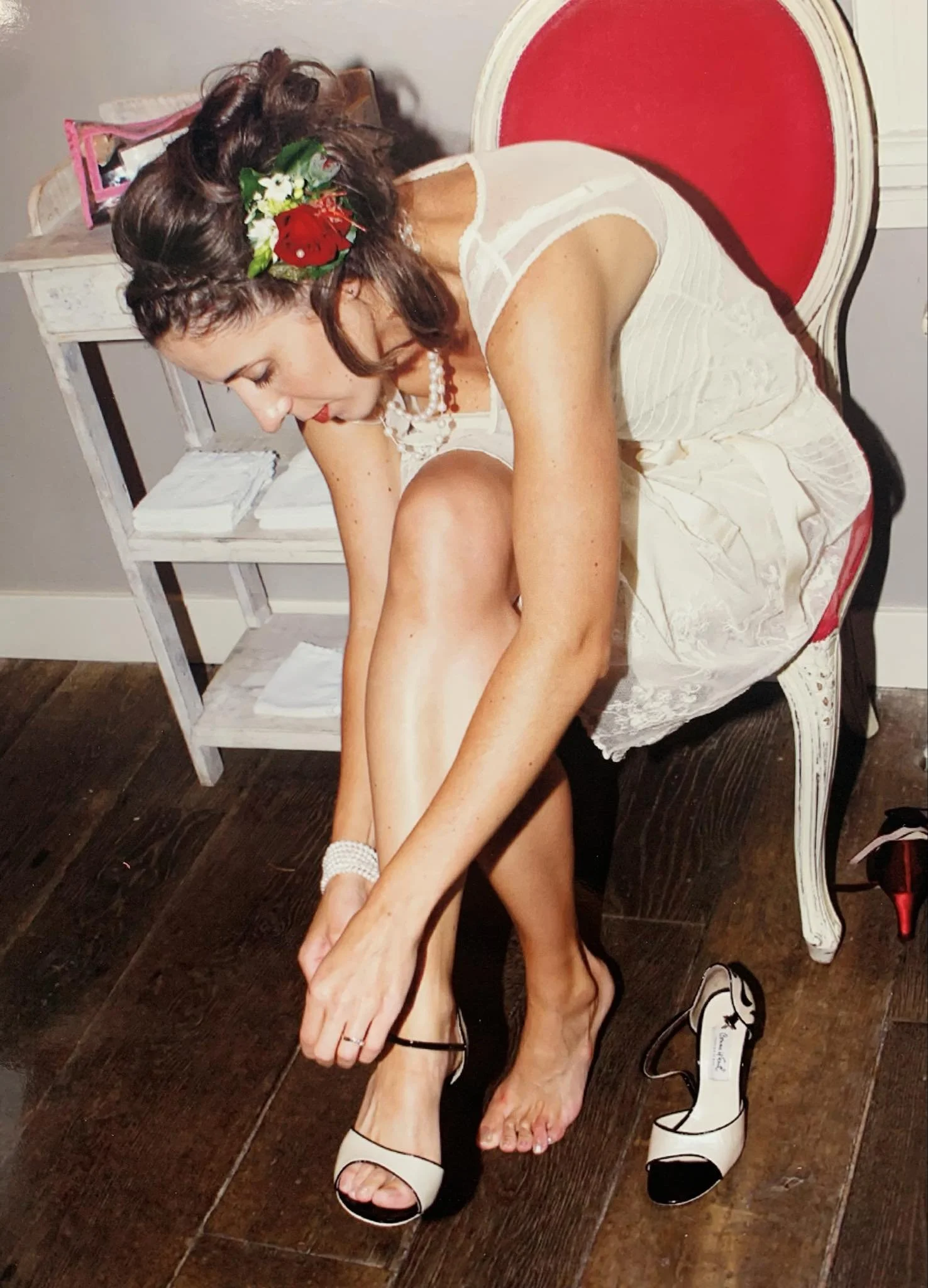Curled Toes, Muhammad, and Your Real Estate
What do you see here?
Apart from a young woman who has already had some sobering life experiences but is still full of joy and anticipation, what I see right now is her curled toes. So not Comme Il Faut … (Tangueras, pun intended!)
Why did she need to curl them? There is a lifetime behind the answer.
She might have been teased for her long toes as a child
She might have felt insecure for a big part of her life
She might have worn tight, poorly-fitting shoes (have you ever tried making small shoes fit by pouring some cheap cologne in them and wearing them at home? This is called Soviet Ingenuity, you are welcome)
She might have worn her jandals too often (it can be toe-curling to say it to the whole nation, and I am sorry about this uncomfortable truth, but jandals are not good for your feet)
She might have had weak foot muscles, trying to compensate for balance and stability by gripping her toes …
All. Of. That.
Yes, that’s me. You can’t imagine how many times people would have come to my feet and gently stroke my curled toes during my Feldenkrais® training, just to remind me that I don’t have to do it. And while I am still actively unlearning the toe gripping, toe curling habit, I can tell you what made the biggest difference on this journey.
It was a Functional Integration® lesson called “The Artificial Floor”. Moshé Feldenkrais’ idea was genius in its simplicity. If the mountain won't come to Muhammad, then Muhammad must go to the mountain: If there are parts of the foot that won’t come to the ground and get all the support the foot is meant to have, then the ground must go to the foot. We take a flat, hard piece, such as a hardcover book, a cork placemat, or a specially made hard plastic or wooden board, and bring it into contact with the foot in a series of specific “touches”.
Using the words of Larry Goldfarb, one of my Feldenkrais trainers: “Touching a person's foot with a small, thin board without making direct contact with his hands, Moshé Feldenkrais would give someone a profound and transformative, unmistakable sense of skeletal support and internal connection from the sole of their foot through the leg, pelvis, spine, and all the way to the head.”
Having experienced this lesson taught to me through contact with such a board felt lovely and refreshing, but it was not until the next morning that I was hit by a realisation, while walking to the training venue. All of a sudden, I felt my toes coming into contact with the ground, uncurled. For the first time in years, I was not gripping. And because my toes are long indeed, bringing them into contact with the ground gave me about 20% of extra “real estate” under my feet, with the ripple effect - all the way to my head.
I cannot tell you how exhilarating it felt. So much so that, despite being late, I grabbed Caryn, the practitioner who had given me that lesson and brought her into another room to share my “real estate” discovery straight away. (If you have ever had such an “aha” moment, you know how it feels, and you are smiling in recognition right now.)
Gripping your toes will not just change the shape of your toes, over time. It changes what parts of your foot you push into the ground. It means more pressure on the ball of your foot, lots of friction and calluses when your toes rub on your shoe, and more tension in your shin. Those are only local changes, because curled toes are translating into postural compensations - all the way through your pelvis (hello, pelvic floor) to your head.
So, what to do if you notice that you are gripping with your toes?
Ditch your jandals, crocs, clogs, mules - any shoe that does not fully attach to your foot
Make sure that your shoes are the right size and have plenty of space for your toes
Start engaging your intrinsic foot muscles:
spread your toes (there are active and passive ways of doing it, ask me if you want options),
stretch the top of the foot,
roll a tennis ball under the arch of your foot;
do toe lifts,
balance on one leg (on the floor, on a folded towel, on a yoga block, on a half-roller, on a half-roller round side down)
Ask your Feldenkrais® practitioner to give you an Artificial Floor lesson. A new sensory experience will get you to places that willpower would never do.
In my case, I had the birthright to use that “extra” real estate under my toes. But I had no idea I could have access to it. We all have these “blind spots”, and sometimes we need other people’s help to discover that the support is there; the only question is whether we are ready to claim what’s ours and see what kind of potential is underneath.

